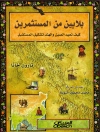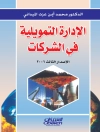This book focuses on economic inequality, its measurement, and its relationship with economic growth and development. The current literature uses multiple points of view, ranging from ethical, legal, philosophical, to political and economic, to understand the nature of (in)equality. Presenting the problem objectively, this book shows how to measure the phenomenon statistically along with an international comparison of the level of income inequality and economic growth and of their complex relationship. The book also analyzes three decades of theoretical and empirical evidence to understand this phenomenon and discusses a number of political measures to reduce economic disparities while stimulating economic growth.
Inhaltsverzeichnis
Chapter 1. Introduction.- Chapter 2. Inequalities and economic inequality.- Chapter 3. Economic inequality.- Chapter 4. Economic growth.- Chapter 5. Inequality and growth.- Chapter 6. Inequality of opportunities.- Chapter 7. Recent trends of growth and inequality in a post-pandemic world.- Chapter 8. Summary remarks.
Über den Autor
Giuseppe Arbia is a full professor of Economic Statistics at the Faculty of Economics, Catholic University of Rome (Italy) and lecturer at the University of Italian Switzerland in Lugano (Switzerland). His research focuses on spatial statistics and spatial econometrics, and he has published nine books and more than 200 articles in leading journals on these topics. He has been a chairman of the Spatial Econometrics Association since 2006 and a member of the Directory Board of the Italian Statistical Society in the period 2016-2020. He is also an active member of several other international scientific societies. From 2020, he is an editor-in-chief of the Journal of Spatial Econometrics, published by Springer-Verlag. Since 2008 he is the Director of the “Spatial Econometrics Advanced Institute”, and since 2016 the leading editor of the book series “Spatial Statistics and Spatial Econometrics”, Elsevier. He has been a visiting professor in several universities in the five continents of the world.












